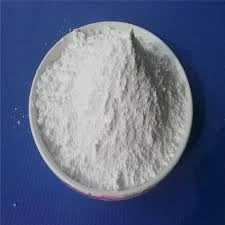Chemicals Used in Wastewater Treatment
Wastewater treatment is an essential process in managing used water from various sources, including households, industries, and agricultural activities. The treatment process not only aims to eliminate contaminants but also to safeguard public health and protect the environment. One of the critical components of effective wastewater treatment is the use of various chemicals, each playing a specific role in the treatment process. This article explores the primary chemicals involved in wastewater treatment, their functions, and their impacts on the overall treatment efficiency.
1. Coagulants
Coagulation is a fundamental step in wastewater treatment, particularly in the primary treatment phase. Coagulants are chemicals that facilitate the aggregation of suspended particles in the water, allowing them to form larger clumps known as flocs. Common coagulants include aluminum sulfate (alum), ferric chloride, and polyaluminum chloride. These chemicals work by altering the charge on suspended particles, enabling them to come together and settle more efficiently during sedimentation. The use of coagulants significantly improves the removal of turbidity and organic matter from wastewater.
2. Flocculants
Following coagulation, flocculation may be employed to further enhance the settling of solids. Flocculants are typically long-chain polymers that help stabilize the flocs formed during coagulation and promote their growth. They assist in binding smaller particles together, increasing their size, and aiding in their removal from the water. Common flocculants include polyethylene oxide and polyacrylamide. The effectiveness of flocculants can significantly reduce the amount of sludge generated and improve the efficiency of solid-liquid separation.
3. Disinfectants
Disinfection is a crucial step in the wastewater treatment process aimed at eliminating pathogens to ensure that the treated effluent is safe for discharge or reuse. Several chemicals can be employed as disinfectants, including chlorine, chloramines, ozone, and ultraviolet (UV) radiation. Chlorine is one of the most widely used disinfectants due to its effectiveness and cost-efficiency; however, it can produce harmful byproducts, necessitating careful management. Ozone is another powerful disinfectant that decomposes rapidly, leaving no residual chemicals, while UV radiation effectively inactivates microorganisms without adding any chemicals to the water.
what chemicals are used in wastewater treatment

4. pH Adjusters
Maintaining the appropriate pH level is essential for many biochemical processes that occur during wastewater treatment. Acidic or alkaline conditions can hinder the efficiency of biological processes, such as those carried out by bacteria in activated sludge systems. Chemicals such as sulfuric acid or sodium hydroxide are often used as pH adjusters to optimize conditions for these microbial activities. Correct pH levels also enhance the effectiveness of coagulants and disinfectants, leading to improved treatment results.
5. Nutrients
In biological wastewater treatment processes, such as activated sludge systems, the addition of nutrients is often necessary to support the growth of microorganisms that breakdown organic matter. Key nutrients include nitrogen and phosphorus, typically added in the form of ammonium sulfate and various phosphorus salts. The proper balance of these nutrients is critical as a deficiency can limit microbial growth, while excess nutrients can lead to eutrophication in receiving waters, negatively impacting aquatic ecosystems.
6. Odor Control Chemicals
Odors generated during wastewater treatment can be a significant concern, especially in urban areas. Chemical agents such as sodium hypochlorite, hydrogen peroxide, and biologically derived products may be implemented to mitigate unpleasant odors. These substances help neutralize odorous compounds, such as hydrogen sulfide, improving the overall acceptability of wastewater treatment facilities in surrounding communities.
Conclusion
The wide array of chemicals utilized in wastewater treatment plays a vital role in ensuring effective treatment processes. Coagulants, flocculants, disinfectants, pH adjusters, nutrients, and odor control agents all contribute to improving water quality and environmental safety. As regulations surrounding water treatment continue to evolve and the demand for safer water sources grows, the careful selection and use of these chemicals will remain paramount. Continuous research and development will further enhance the efficacy of these substances, ensuring that wastewater treatment practices can adapt to emerging challenges while fostering a sustainable and healthy environment.

